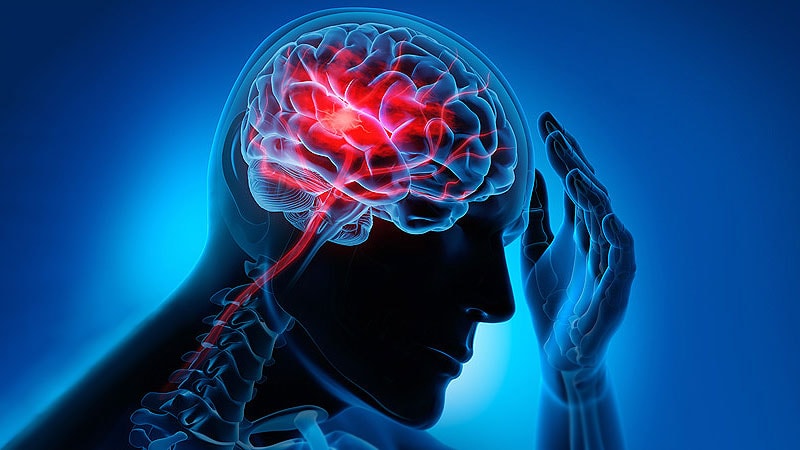Core Concepts
Structural bone anomalies can cause recurrent strokes, necessitating unique diagnostic and treatment approaches.
Abstract
In a new case series, the presence of structural bone and cartilage anomalies causing mechanical stress to brain-supplying arteries is identified as a potential cause of recurrent ischemic strokes. The study emphasizes the importance of considering "bony strokes" in patients with recurrent strokes in the same vascular territory. Diagnosis involves a combination of imaging techniques, including CT, MRI, angiography, and sonography. Treatment options range from conservative measures to surgical interventions, with a focus on eliminating the mechanical stressor. The study highlights the need for further research and prospective trials to optimize patient care and prevent future stroke recurrences.
Unusual cause of ischemic stroke: bone and cartilage anomalies stress brain-supplying arteries.
Diagnosis based on imaging techniques: CT, MRI, angiography, and sonography.
Treatment options include conservative measures, endovascular stenting, and surgical interventions.
Emphasis on eliminating the mechanical stressor to prevent recurrent strokes.
Call for future prospective trials to enhance patient care and outcomes.
'Bony' Stroke: Bone Defects Can Cause Recurrent Stroke
Stats
"In patients with recurrent strokes in one vascular territory the presence of a symptomatic anatomic bone or cartilage anomaly may be considered as a differential diagnosis after sufficient exclusion of competing etiologies of an ischemic stroke."
"The study was published online April 13 in the journal Stroke."
"The authors describe the identification and therapeutic workup of six patients with a bony stroke among 4200 patients with ischemic stroke treated from January 2017 to March 2022 at their comprehensive stroke care center, constituting an incidence of 0.14%."
"Compared with annual stroke rates in atrial fibrillation patients, stroke recurrence in this patient cohort ahead of definite treatment was high (cumulative 2.14 strokes per year)."
Quotes
"Due to the possibly high risk of stroke recurrence and potentially causative treatment options, bony strokes seem to be highly relevant for clinical practice."
"Our case series aims to raise awareness for the rare entity of bony strokes, emphasizing the necessity to evaluate structural bone or cartilage lesions as a possible cause of ischemic stroke in patients with stroke recurrence of unknown cause in one vascular territory."
Key Insights Distilled From
by Sue Hughes at www.medscape.com 04-20-2023
https://www.medscape.com/viewarticle/991025
Deeper Inquiries
How can the medical community raise awareness about the potential of bony strokes as a cause of recurrent ischemic strokes?
The medical community can raise awareness about bony strokes by emphasizing the importance of considering structural bone and cartilage anomalies as a differential diagnosis in patients with recurrent strokes in one vascular territory. This can be achieved through educational initiatives targeting healthcare professionals involved in stroke care, including neurologists, radiologists, and emergency department physicians. Additionally, disseminating information through medical conferences, publications, and online platforms can help increase awareness about this rare but significant cause of ischemic strokes.
What are the implications of the study's findings on the current diagnostic and treatment protocols for ischemic strokes?
The study's findings have several implications for current diagnostic and treatment protocols for ischemic strokes. Firstly, it highlights the importance of utilizing a combination of imaging modalities, including CT, MRI, angiography, and sonography, to diagnose bony strokes accurately. Incorporating dynamic imaging techniques that assess the impact of head movement on brain-supplying arteries can also aid in identifying compressive effects caused by bone or cartilage anomalies. In terms of treatment, the study suggests diverse options such as conservative management, endovascular stenting, surgical bypass, or removal of the mechanical stressor. These findings underscore the need for individualized treatment approaches tailored to the underlying cause of the stroke, which may lead to better outcomes for patients.
How might the identification and treatment of bony strokes impact the overall management of stroke patients in the future?
The identification and treatment of bony strokes can significantly impact the overall management of stroke patients in the future by offering a potential solution to prevent recurrent ischemic strokes. By recognizing bony strokes as a possible etiology, healthcare providers can implement targeted diagnostic strategies to identify these anomalies early in the course of stroke evaluation. This proactive approach may lead to more precise treatment decisions, including the removal of the mechanical stressor through surgical intervention or endovascular procedures. Ultimately, addressing bony strokes in stroke patients could reduce the risk of future stroke recurrence, improve patient outcomes, and optimize the overall management of ischemic strokes.
0
